What is the best door seal?
When an unpleasant smell enters the apartment or it blows cold from the front door, then weak sealing is to blame for such troubles. It will be possible to fix the problem by installing a door seal around the perimeter of the canvas. It will be equally useful for a wooden or plastic door, as well as for powerful iron structures.
The seal for the door must be selected individually for each leaf. Its characteristic must satisfy the geometric and physical parameters of the sashes on which installation is supposed to be carried out. Too thick and too thin tape will not be able to fully effectively cope with the tasks. Therefore, you will have to seriously approach the choice of profile.
What is a sealant
Door seals on the front door are a reliable protection against external negative influences - dust, sound, cold. Also, such an addition has good thermal and sound insulation properties. This effect is achieved through the use of porous materials or substances with a low heat transfer coefficient.
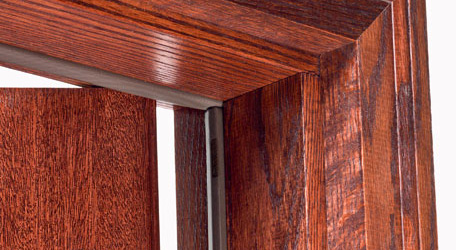
As a rule, seals for entrance doors are made with adhesive tape on one side, which allows it to be glued quickly and without problems. True, a cheap door seal does not last long, and soon begins to lag behind the surface.
VIDEO: Why is it blowing from the front door
Classification
The main gradation occurs according to three criteria - the material of manufacture, the purpose (place of attachment) and the type of profile.
Material
The first in this list is the material from which the seal is made:
- polyurethane - the cheapest in the line, which is used mainly for interior doors, this option is categorically not suitable for entrance doors
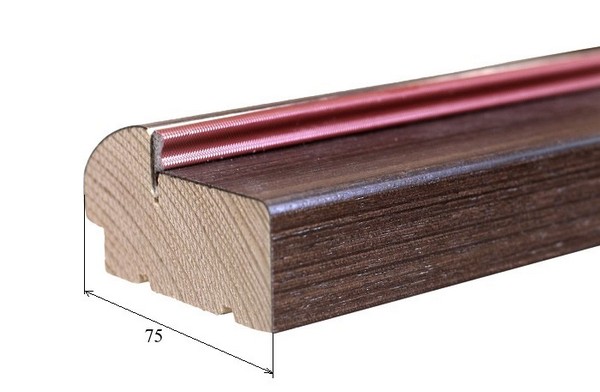
- silicone - dense quality, used for rooms with high humidity
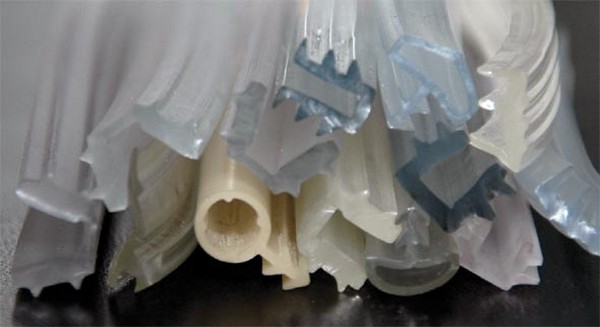
Made of silicone
- rubber - with regular treatment with silicone grease, it can last up to 5 seasons; produced in the form of centimeter tapes with an adhesive base and without it
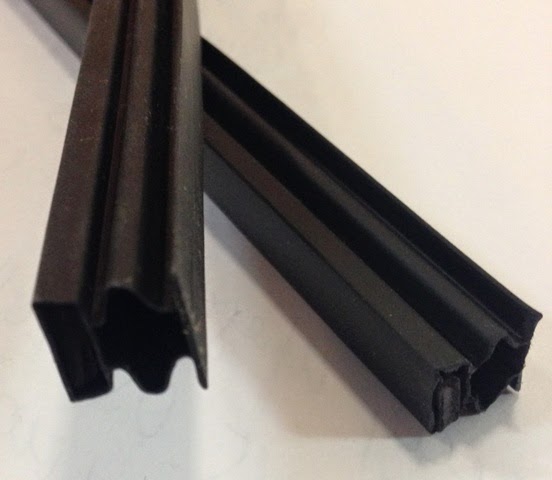
Rubber with magnetic stripe
- thermoplastic elastomer (synthetic rubber) is by far the best variant of all offered, retaining elasticity and resilience at temperatures of -70°С…+90°С.
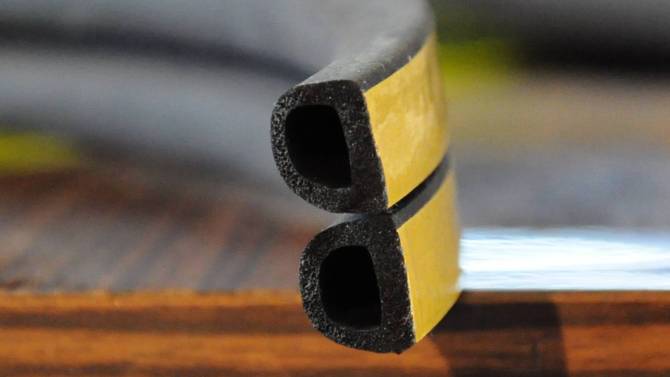
Elastomer
- threshold - made of rubber or synthetic rubber with a denser structure. It is attached to the threshold of the front door, where the load is always increased. The side parts of the door and the upper bar are closed with a U-shaped seal
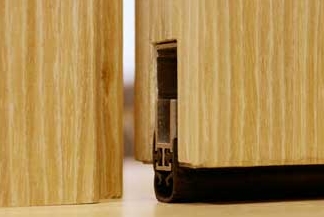
threshold type
- contour - a well-known material that is attached around the perimeter of the canvas in a special groove or simply along the edge. Simultaneously with protection against noise and draft, it acts as a damper gasket, due to which the door slams softly;
- fireproof - in appearance it is almost an ordinary sealant, which, with a sharp increase in temperature, foams and completely blocks the access of air, which leads to the extinction of the flame.
Profile type
- tape - a popular type of product, made in the form of a strip 0.8-1 cm wide and up to 6 meters long (this is the standard perimeter of the front door)
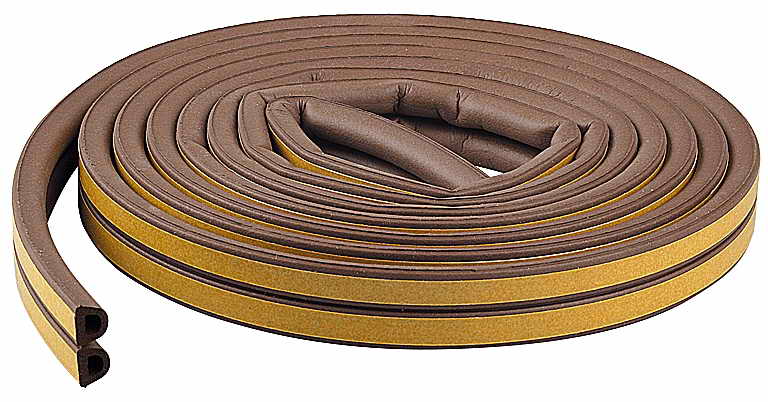
- tubular - a hollow rubber, silicone or vinyl tube inserted into a casing made of plastic or metal. Compared to tape, it provides less sealing, but better damping properties;
- spring - made of rubber or silicone rubber, attached to the box with silicone sealant or nails.
In order to determine exactly what thickness a profile is needed for a specific door, make a rectangular strip of plasticine with a cross section of 1 cm and a length of 3-5 cm, wrap it in cellophane, insert it between the box and the door and close it tightly.
Almost always, the packaging is supplied with detailed instructions for use and a set of fasteners. For metal doors, in most cases self-adhesive strips are used.
VIDEO: Self-adhesive seals for windows and doors
Required parameters for seals
Human nature is such that each of us tries to provide ourselves with comfort, but at the same time expend a minimum of effort. This applies to everything, and insulation in this case is no exception. Why suffer from drafts from a window or door when you can put a seal and forget about this problem altogether?
So, the main parameters that the sealant meets
- The speed and ease of sticking - the whole process will take at most 15 minutes, and enough not only for this winter, but also for the next 3-4.
- Isolation of odors, dust and sounds - seals allow you to get rid of all negative factors.
- A rubber or silicone seal provides the door with good cushioning when slamming/opening.
- The whole structure should not vibrate due to the presence of play.
- During closing / opening there should be no sharp sounds from the contact of the metal parts of the door.
- At sub-zero temperatures, the seals must remain elastic and not tan, otherwise gaps will appear through which they will blow again.
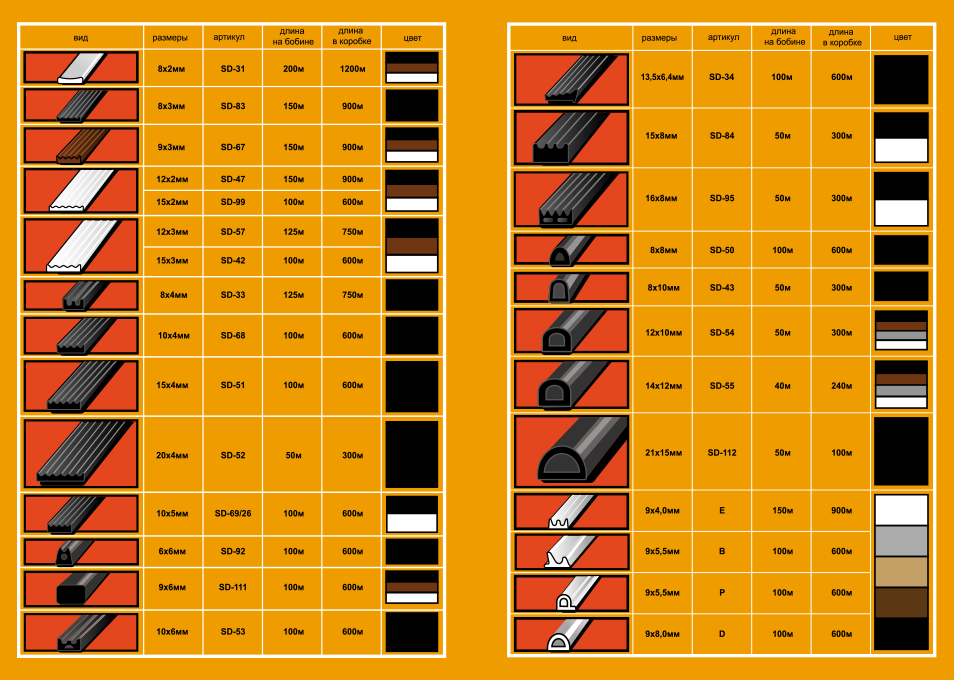
Under the order, it is possible to manufacture a sealant of all profiles in any colors and sizes.
Material properties
Different materials have different positive properties.
- The used rubber seals for doors have a high degree of endurance. They withstand multiple work cycles for compression / decompression, calmly tolerate exposure to UV rays, affordable. The basis for them is oil-resistant and acid-resistant rubber.
- Silicone seals are quite popular in many apartments. The material does not emit harmful fumes into the atmosphere, having excellent environmental qualities. Due to anti-allergenic properties, it is allowed for use in school and preschool institutions.
- Polyurethane seals on the door are fixed without any problems. Often it is provided with a self-adhesive surface.
- The cheapest is the foam seal. However, its lifespan is often limited to one or two seasons.
Magnetic seals
Door manufacturers have recently been using this type of seals on finished assembled products. Similar tapes can be seen on the doors of refrigerators or freezers. The principle of operation is to reliably attract the material to the opposite metal surface.
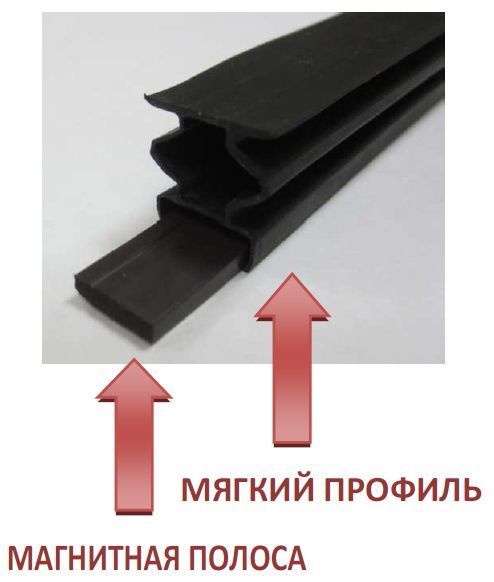
The magnetic seal does not lose its properties at temperatures from -55°С to +70°С
If the magnets are set to high clamping force, it will be difficult for children and the elderly to overcome, and insufficient attraction will reduce effective sealing work.
It is preferable to mount magnetic seals on a web devoid of various decors, and the mating surface must have sufficient area for reliable attraction. At the heart of the tape there are two elements:
- plastic edging;
- magnetic core.
The outer layer is made of thermoplastic elastomer, which has a lot of advantages:
- shows high resistance to aging;
- able to function effectively in the temperature range -70°C ... +90°C;
- The material is recyclable, which improves the environment.
To choose the right door seal, you need to consider certain factors:
- it is necessary to select self-adhesive tapes with a long shelf life to ensure fastening strength;
- it is not recommended to use foam rubber bands in tandem with metal doors, since a significant load from a massive door will quickly disable the tape;
- before buying any tape, you need to familiarize yourself with the terms of its use, which will allow you to effectively operate it;
- you can test the reliability of the seal by pressing the tape with your hands, if it quickly recovered after exposure, then this is a positive sign;
- if pasting is necessary in the process, then silicone reliable glue is used;
- the degree of rigidity of the seal should be medium, since an excessively soft one has a short service life, and a coarse one will not always allow the door to be closed well.
Based on the markings on the packaging of the tapes, they are able to cope with gaps of various widths.
If the gap thickness is 1 mm, it is worth choosing a rectangular PVC or foam rubber profile.
VIDEO: Insulation of doors and windows with a sealant
